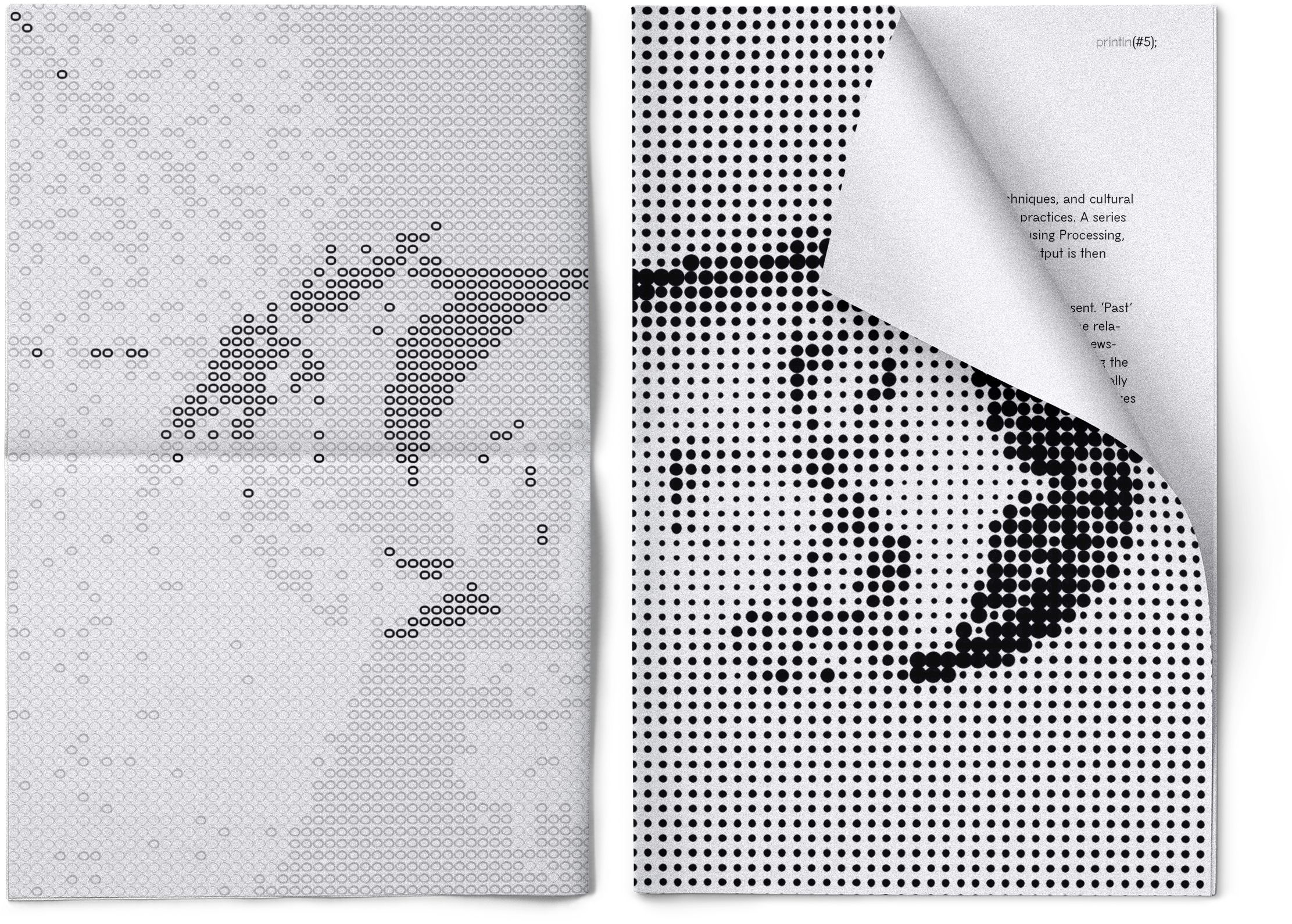
Render is a visual narrative exploring the history, techniques, and cultural impact of digital and print-based image manipulation practices. A series of images are input through twelve algorithms created using Processing, with code by Tim Rodenbröker as a starting point. The output is then paired with text and presented within a 56 page book.
Render is divided into three main parts: past, process and present. ‘Past’ gives a historical background of halftone printing to introduce the relationship between photography and media, specifically looking at newspapers. ‘Process’ transitions into a more digital context by explaining the mechanical process of halftone printing and introducing effects typically found in Photoshop, exploring how this tool has been used to alter images. ‘Present’ moves the viewers into a purely code-based space, describing how digital image manipulation impacts things like photojournalism and the representation of reality.
Render does not intend to provide a strong point of view. But it does invite the reader to question how the media has affected our perception of the world, an especially relevant wonderment in this digital age. We’ve learned how to present ourselves through a computer screen, allowing us to stay more connected than ever. We have access to vast amounts of data and have found interesting ways to get lost in said data. But what have we sacrificed in return?
Render is divided into three main parts: past, process and present. ‘Past’ gives a historical background of halftone printing to introduce the relationship between photography and media, specifically looking at newspapers. ‘Process’ transitions into a more digital context by explaining the mechanical process of halftone printing and introducing effects typically found in Photoshop, exploring how this tool has been used to alter images. ‘Present’ moves the viewers into a purely code-based space, describing how digital image manipulation impacts things like photojournalism and the representation of reality.
Render does not intend to provide a strong point of view. But it does invite the reader to question how the media has affected our perception of the world, an especially relevant wonderment in this digital age. We’ve learned how to present ourselves through a computer screen, allowing us to stay more connected than ever. We have access to vast amounts of data and have found interesting ways to get lost in said data. But what have we sacrificed in return?








